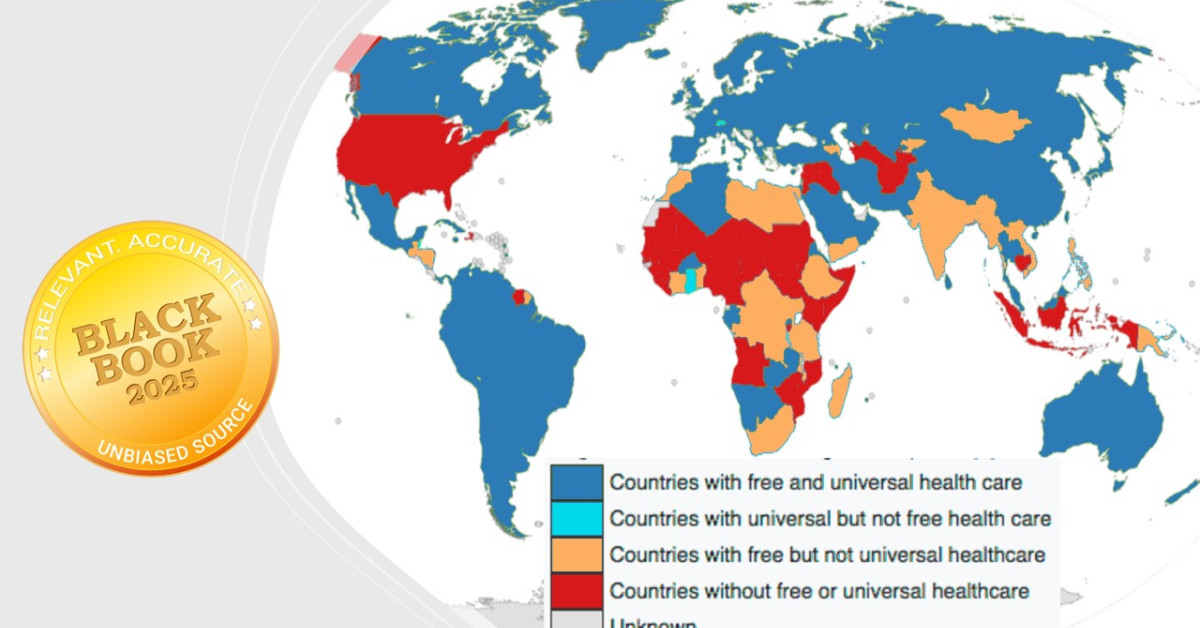Rwanda’s Health-Care Success Holds Lessons for Others
The people of Rwanda have been tested by tragedy. Nearly thirty years ago, when ethnic Hutu extremists sought to exterminate the country’s Tutsi minority, more than one million lives were lost. The violence strained the nation’s fragile health-care system, which was already inaccessible to rural residents, who made up 83 percent of the population.
When the COVID-19 struck, it encountered a decidedly different health-care system. Although Rwanda reported more than 33,194 cumulative cases and 1,468 deaths, it also weathered the pandemic uniquely well. The country was prepared to allocate vaccines by region as soon as donations from China and the United States began arriving in March 2021. Within two years, 82 percent of the population had received at least one dose, far outshining neighboring countries like Tanzania (52 percent), Uganda (41 percent), the Democratic Republic of Congo (10 percent), and Burundi (0.26 percent). Rwanda’s ability to bring everyone in the Ministry of Health and partner institutions together to track vaccination rates, reach communities most at risk, and dispel misinformation helped the nation become a world leader in the vaccine rollout.
What did Rwanda change between the genocide and the pandemic to improve its health-care accessibility, and what lessons can other low-income countries adopt to strengthen their own health-care systems? Three developments stand out: low-cost community-based health insurance plans, national investments in rural health posts, and ramped-up foreign collaborations.
More than 90 percent of Rwanda’s people had some kind of health insurance
Community-Based Health Insurance Programs
Rwanda’s community-based health insurance (CBHI) programs, known as Mutuelles de Santé, enable citizens to pool funds with donations from foreign charities, the Rwandan government, and international organizations such as the Global Fund to Fight AIDS, Tuberculosis, and Malaria to collectively cover the expenses of health care. Members contribute 1,000 Rwandan francs ($2) per family member.
This program has evolved over the years. Copayments for outpatient visits of even $0.36 proved unaffordable for many, so in 2011, the Mutuelles began fully subsidizing premiums and copayments for 1.5 million of the country’s poorest residents.
Owing to these efforts, in 2020, more than 90 percent of Rwanda’s people had some kind of health insurance. This stands out relative to other low-income countries, where on average 31 percent of people have health insurance. Experts say that coverage has helped contribute to a massive rise in Rwanda’s life expectancy, from 49.7 years in 2001 to 69.6 in 2022, and empowered the country to tackle prominent causes of mortality. Indeed, Rwanda is the only sub-Saharan low-income country to meet the UN Millennium Development Goals of reducing maternal mortality and reversing the spread of malaria, tuberculosis, and AIDS.
Nonetheless, challenges remain. Some Rwandan households continue to struggle to afford costs not covered by health insurance, such as transport to and from health facilities. CBHI has made great strides in improving health-care affordability, but room for improvement remains.
A man receives a vaccine against COVID-19 at the Masaka hospital, in Kigali, Rwanda, on March 5, 2021.
REUTERS/Jean Bizimana
Health-Care Investments Powering Infrastructure Developments
Part of Rwanda’s success can be attributed to the priority its government puts on health. With strong support from community, religious, local, and national leaders, the country spent 7.8 percent of its 2020 budget on health care, well above the regional average.
In a recent push to make health care more accessible, the country has been installing new health posts, with the goal of reducing patients’ average walking time to care from 47 minutes in 2020 to 24 minutes in 2024. Between August 2021 and February 2022 alone, the government established 1,179 of these health posts.
Although these primary care facilities provide rapid accessibility to the most immediate forms of health care, those seeking specialized treatment still face difficulties in access. More remote patients may have to journey hundreds of kilometers to reach a tertiary health-care center. Broad distribution of specialty care may be impractical, but better transportation infrastructure nationwide could help support these patients.
The training of medical professionals has also not kept pace. In Rwanda, the nationwide physician shortage is dire, particularly in rural locales. Nurses, who bear heavy responsibilities in many of these health-care facilities, have expressed feelings of incapability in diagnosing some patients. “A nurse working in a hospital does what he or she should be doing while the same nurse working in a health center does the work of a doctor, the work of a nurse, and the work of anybody,” reported one thirty-five-year-old Rwandan nurse in a study published in the African Journal of Primary Health Care & Family Medicine.
In an effort to address these concerns, the Rwandan government has now built twenty-one second-generation health posts, which offer more specialized services such as dental care, maternity care, laboratory testing, and ophthalmology. Increasing health-care investments have come with particular trade-offs, with funding for water, sanitation, and hygiene infrastructure actually decreasing as a share of the total government budget.
The achievements of Rwanda’s health-care system were built on a foundation of strong leadership, community engagement, and collaborative partnerships
Opportunities for and Acceptance of Foreign Partnerships
Relative to other low-income countries, Rwanda has benefited from numerous foreign partnerships. An early notable example was in 2005 when then Minister of Health Dr. Agnes Binagwaho invited a partnership with the nonprofit Partners In Health (PIH), on account of the organization’s effective work with impoverished populations in Haiti and Peru. Over the two decades that followed, PIH has refurbished and launched three district hospitals and a multitude of local health centers, created employment opportunities for thousands of community health workers, and founded the University of Global Health Equity to train the next generation of health-care workers.
The regret some nations and organizations still feel about their inaction during the 1994 genocide may have also spurred foreign investment. But Rwanda’s stable governance and predictable business environment, facilitated by improved road, port, and telecommunications infrastructure, have also given outsiders confidence. Other low-income countries may not always be able to replicate such partnerships given their different historical circumstances, but reducing political instability, government corruption, and insecurity are clearly important goals.
The achievements of Rwanda’s health-care system were built on a foundation of strong leadership, community engagement, and collaborative partnerships. The country’s health-care system is not without its challenges, including shortages of basic equipment, specialized infrastructure, and trained health-care providers. But its successes merit consideration by other countries. Catastrophe need not be the only catalyst for health-care reform.
A woman helps her daughter with an IV at the local hospital in Goma, Zaire, on November 17, 1996.
REUTERS/John Parkin
link






